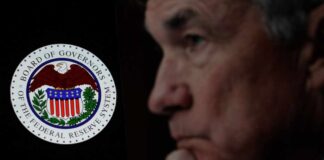
In a potential landmark case concerning freedom of speech and social media, the U.S. Supreme Court has agreed to consider whether public officials can block criticism on their personal social media accounts. This pivotal decision will examine two cases with contradictory outcomes, pitting First Amendment rights against public officials’ control of online dialogues.
The first case involves the Poway School Board members Michelle O’Connor-Ratcliff and T.J. Zane, who Christopher and Kimberly Garnier sued after the officials blocked the Garniers’ critical posts on social media. A California federal judge and the U.S. Ninth Circuit Court of Appeals sided with the Garniers, citing First Amendment violations.
The U.S. Supreme Court will consider whether public officials can block criticism of them on social media.https://t.co/fWzlwvI9Yb pic.twitter.com/QoA1RvJhdo
— 🇺🇸 Rich Howard 🇺🇸 (@WylieGuide) April 24, 2023
The second case features Kevin Lindke, a Port Huron, Michigan resident blocked by City Manager James Freed on his public Facebook page. In contrast to the previous case, a federal judge and the U.S. Sixth Circuit Court of Appeals ruled in favor of Freed, stating that since Freed did not operate his Facebook page as part of his duties as the city manager, blocking Lindke did not infringe on First Amendment rights.
In May 2018, a similar case made headlines when a federal judge ruled that former President Trump’s decision to block Twitter users critical of him violated the First Amendment because Twitter was considered a public forum. A federal appeals court upheld the decision in 2019, asserting that “the best response to disfavored speech on matters of public concern is more speech, not less.”
The Supreme Court’s impending decision on these cases raises critical questions about the role of public officials in moderating online dialogues and applying First Amendment rights in the digital age. With the widespread use of social media for communication and information dissemination, the line between private and public use becomes increasingly blurred.
Justice Clarence Thomas has noted the challenge of “applying old doctrines to new digital platforms” and suggested that the Supreme Court will inevitably have to address “how our legal doctrines apply to highly concentrated, privately owned information infrastructure such as digital platforms.” This case provides an opportunity for the court to confront this complex legal landscape and make a lasting impact on the interaction between public officials and constituents in the digital age.
Decisions in these cases and related cases examining tech companies’ liability for user-generated content and content-moderation policies of social media companies are expected in the coming months. With such monumental implications for the future of free speech and digital communication, all eyes will be on the Supreme Court as they navigate the ever-evolving world of social media and First Amendment rights.
















